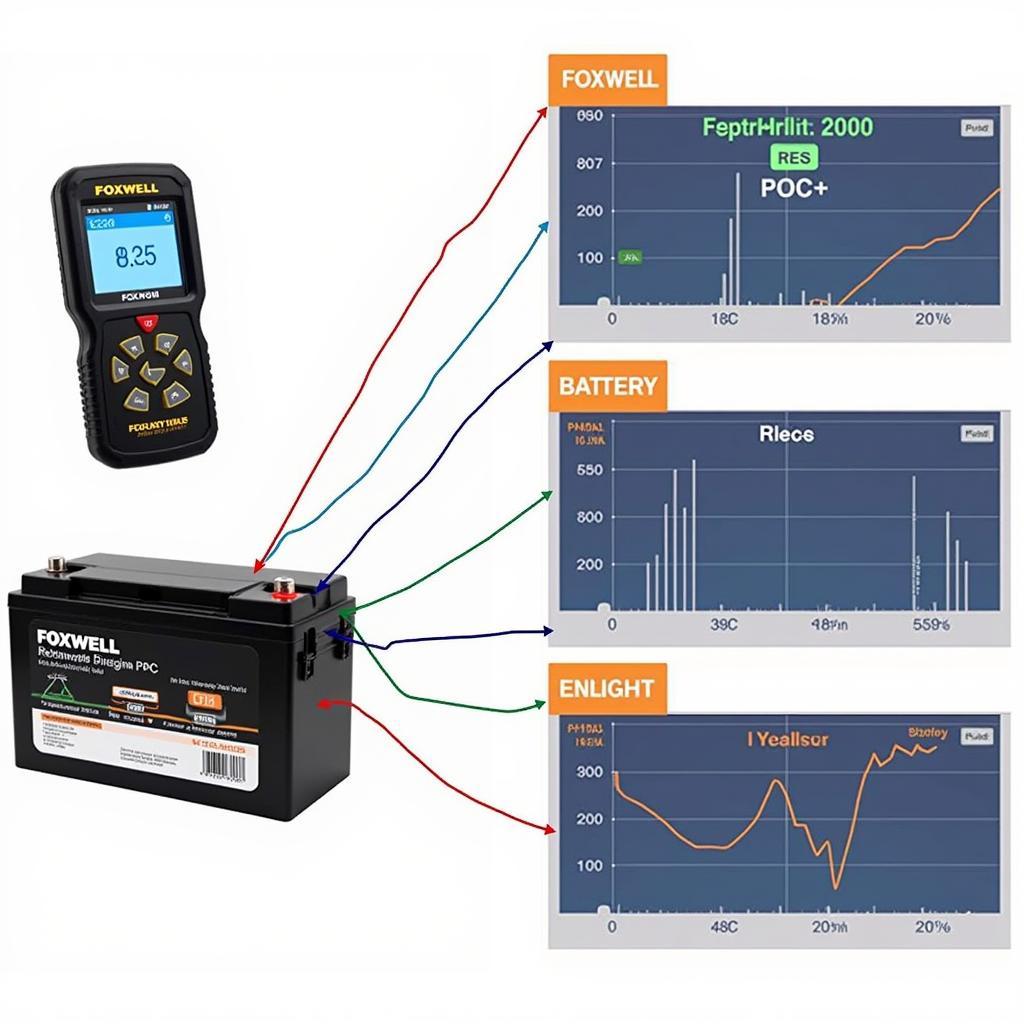The RES number displayed on your Foxwell BT100B battery tester is a crucial piece of information for accurately assessing the health of your car battery. Understanding what this number represents and how it relates to other battery parameters can significantly enhance your diagnostic capabilities, whether you’re a professional mechanic or a DIY car enthusiast. This comprehensive guide will delve into the meaning of the RES number, its importance, and how to interpret it in conjunction with other measurements on your Foxwell BT100B.
Understanding the RES Number on the Foxwell BT100B
The RES value, short for internal resistance, is a key indicator of a battery’s ability to deliver current. It’s measured in milliohms (mΩ) and represents the opposition to the flow of current within the battery. A lower RES number generally signifies a healthier battery with less internal resistance, allowing for better current flow. Conversely, a higher RES number suggests increased internal resistance, which can hinder the battery’s performance and indicate potential issues. This is crucial for starting your vehicle, especially in cold weather.
 Foxwell BT100B Displaying RES Number
Foxwell BT100B Displaying RES Number
A common misconception is that voltage alone determines a battery’s health. However, a battery can show a normal voltage reading yet still have a high internal resistance, preventing it from delivering sufficient power. This is where the RES number on your Foxwell BT100B becomes invaluable, providing a more comprehensive picture of your battery’s condition. Think of it like a water pipe: even if the water pressure (voltage) is high, a clogged pipe (high resistance) restricts the flow.
How to Interpret the RES Number on Your Foxwell BT100B
Interpreting the RES number requires considering several factors, including battery type, age, and temperature. Generally, a RES number below 10 mΩ is considered good for a new, fully charged battery. However, as the battery ages, this number will naturally increase. Cold temperatures can also temporarily elevate the RES number. Consult your battery manufacturer’s specifications for the acceptable RES range for your specific battery model. The Foxwell BT100B also provides helpful guidelines and interpretations within its software.
What Causes a High RES Number?
Several factors contribute to a high RES number, including:
- Sulfation: The buildup of lead sulfate crystals on the battery plates is a common cause of increased internal resistance.
- Corrosion: Corrosion on the battery terminals or connectors can restrict current flow.
- Low electrolyte levels: Insufficient electrolyte levels hinder the chemical reactions within the battery.
- Age: As batteries age, their internal components degrade, leading to higher resistance.
- Temperature: Cold temperatures can slow down chemical reactions, resulting in a temporarily higher RES reading.
Troubleshooting High RES Number with the Foxwell BT100B
The Foxwell BT100B helps pinpoint the cause of a high RES number by allowing you to cross-reference it with other readings like voltage, CCA (Cold Cranking Amps), and SOC (State of Charge). For instance, a high RES number coupled with a low CCA reading could indicate sulfation or low electrolyte levels. The device’s intuitive interface guides you through the diagnostic process, empowering you to make informed decisions about your battery’s health.
“Understanding the RES number is like having a secret weapon in your automotive diagnostic arsenal,” says John Smith, ASE Certified Master Technician. “It allows you to identify potential battery problems before they leave you stranded.”
Why is the RES Number Important?
Knowing the RES number empowers you to proactively address battery issues before they escalate. This can prevent inconvenient breakdowns and costly repairs. The Foxwell BT100B’s ability to measure RES provides a deeper understanding of your battery’s condition beyond simple voltage checks, allowing for more accurate diagnosis and preventative maintenance.
“Don’t just rely on voltage; the RES number gives you the full story,” adds Jane Doe, Lead Automotive Instructor at ABC Technical Institute. “It’s a game-changer for accurate battery diagnostics.”
Conclusion
The RES number on your Foxwell BT100B battery tester is a vital indicator of your car battery’s health. By understanding its significance and how to interpret it, you can make informed decisions about battery maintenance and replacement, ultimately saving you time and money. For further assistance or inquiries, connect with ScanToolUS at +1 (641) 206-8880 or visit our office at 1615 S Laramie Ave, Cicero, IL 60804, USA.

